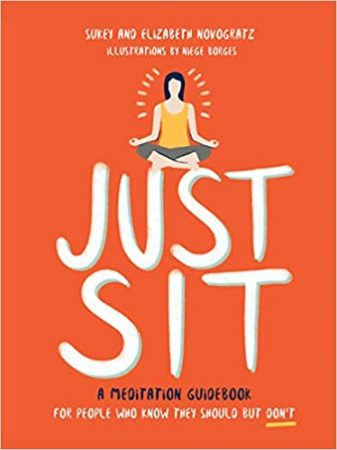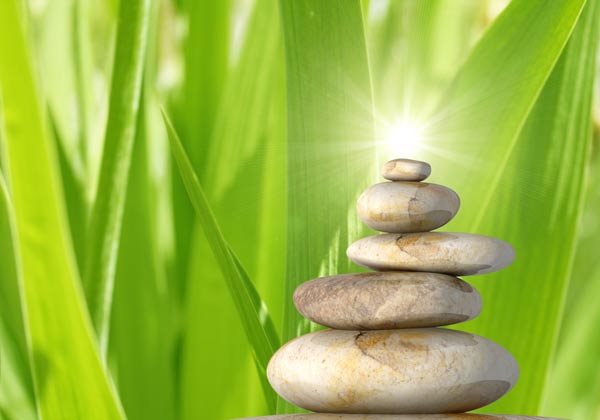The term meditation has become common in the West, but when you’re new to the concept it can be bewildering. Let’s start with a brief introduction to meditation and a simple instruction for meditation practice. The sooner you get started, the sooner you will experience the many benefits of meditation.
What is Meditation?
Most traditional meditation practices originate from countries in the East, like India. Eastern teachers arrived in the West in the early 1900s, when yoga was first introduced here. Since then, the techniques have been adapted to fit a variety of interests. All meditation techniques are beneficial to some degree.
Meditation is a conscious direction of thought from the outer world to the inner world. It is the practice of setting aside time every day to direct your attention within. Think of it as similar to sleep. When you go to bed at night you let go of your daily life and concerns. You wouldn’t be able to sleep if you couldn’t turn off your thoughts and let sleep happen. So, for the night, concerns about your job, bank account, family, and everything else must be put on hold. You trust at that time that everything in your life will remain the same while you’re asleep. And it does.
Meditation is the same thing, although you don’t sleep. You sit upright and stay in a state of awareness and watchfulness—not actively thinking. Yogis have found that trying to control the mind and to quiet it forcefully only aggravates it more. The real challenge and most important practice in meditation is to simply watch your mind, almost as if it’s a boring movie.
The Benefits of Meditation
Meditators have discovered that all areas of their lives are affected by daily practice, regardless of their original intentions. We become better human beings: physically, mentally, emotionally, and spiritually. And those benefits extend to those around us.
Meditation has been subjected to scientific scrutiny for many years. Biofeedback instruments can measure the effects of meditation on our physiology: brain waves, blood pressure, and heart rate. It’s well documented that even the simplest meditation technique provides significant benefits.
 Meditation: A Short and Simple Technique
Meditation: A Short and Simple Technique
The following technique is a good introduction to meditation. It’s easily practiced by anyone, of any age, or of any spiritual, religious, or philosophical belief.
It’s important to observe your experience non-judgmentally throughout the practice. This technique prepares you for the next level of meditation, and it’s your first step toward the experience of true and lasting happiness.
- Sit upright in a chair with good back support, both feet placed squarely on the floor. Place your hands on your thighs in any position where they can rest without moving. Gently lift the gaze of your eyes, as if looking at a picture on the opposite wall. Then soften and close your eyes.
- Relax your jaw and shoulders, and bring your awareness to your breath—watching the breath without controlling it. Simply observe.
- After a minute of this relaxed watchfulness, equalize the incoming and outgoing breaths by mentally counting the seconds on each. If comfortable, wait one second between each direction change of the breath.
- Continue this practice for a few minutes, perhaps ten rounds of breath, and then slowly open your eyes. Take a moment to note how you feel physically and observe the effects of your mental state. Make no judgments about how you feel; no experience is bad, and everyone’s experience will be different.
The positive effects of meditation increase with each practice. Regular, daily practice is best—meditators often notice a difference in the quality of their days if they miss a practice. Meditating at the same time each day helps to develop a habit and makes it easier to be consistent.
Meditation will contribute to your peace of mind, physical health, and emotional well-being. Not only will you greatly benefit from a regular meditation practice, but everyone within your reach will also be affected positively by your calmness and joy.
Quiet Karma is dedicated to helping you develop your meditation practice. By subscribing to the blog, you will receive regular and gentle reminders, as well as helpful hints.
Did you find this introduction to meditation helpful? What has been your experience with meditation? Share your thoughts by leaving a comment.
Read the next article in this series:
Chityānanda has been a disciple of Svāmī Gurupremānanda Sarasvatī since 1975. She teaches meditation and yoga as a spiritual path in Santa Cruz, California.



I must say the articles written on the site are easy to read and understand. This article in particular provides a simple technique to assist you with your meditation practice.
Thank you for your nice comment, Nakisa. It’s nice to know that Quiet Karma is providing something useful to you.